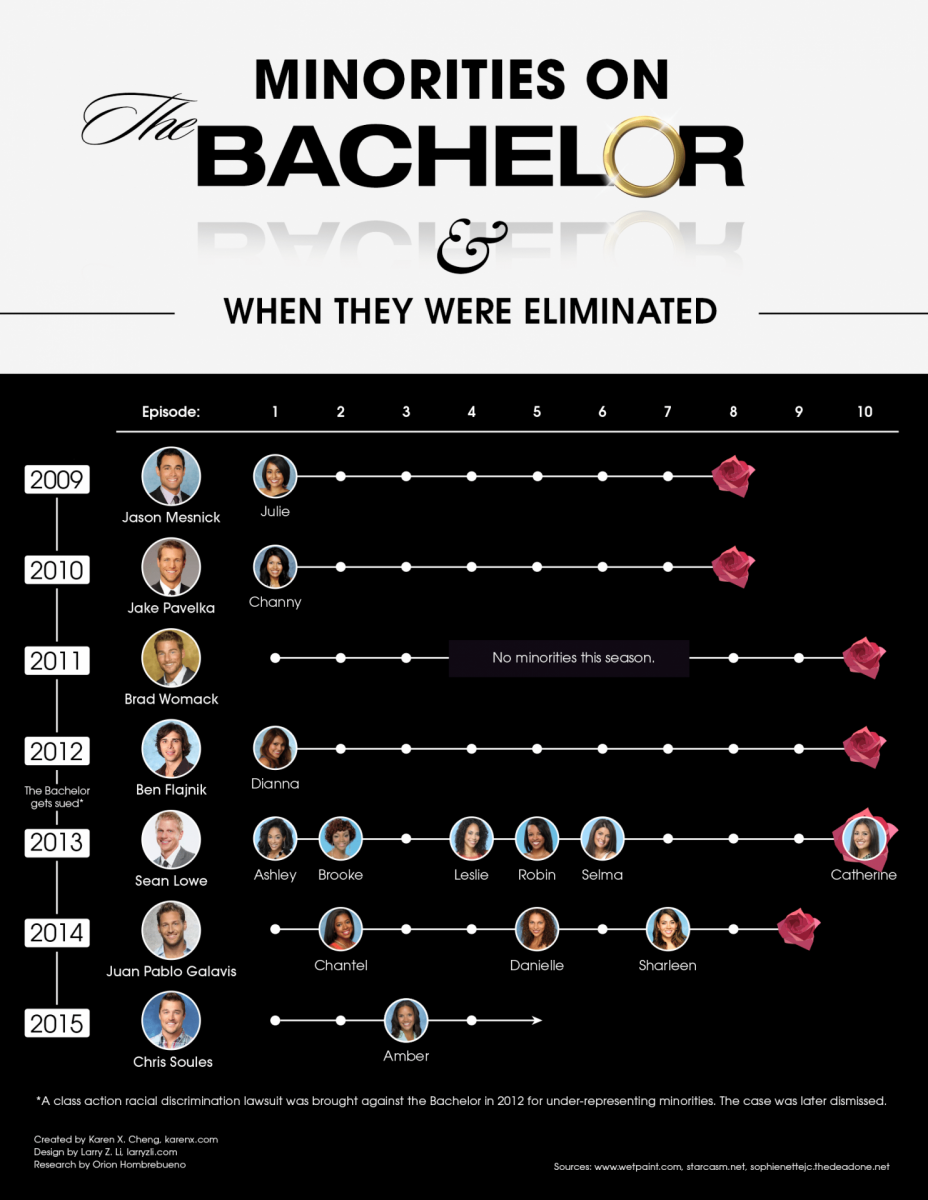The Bachelor has received criticism for the lack of diversity in the cast, particularly in earlier seasons. All 12 Bachelorettes have been white, and of the 20 seasons of the Bachelor, only one has been a minority. The whiteness of the leads is also reflected in the people who are selected to be their potential partners. While women of color have appeared on the show, as this graphic shows, they rarely make it beyond the first few weeks. For a long time, issues of race remained unspoken on the show, as racial minorities continually remained irrelevant to the dominant narrative. This is framed as relational choice rather than underlying issues of representation and corporate values that “otherize” minorities on the show. The graphic below shows the women of color who appeared on recent seasons of The Bachelor and the weeks they were eliminated. No woman of color has ever ended up the winner, with the exception of Catherine in Season 17, who was half Filipina, perpetuating the notion that these women are “exotic stops en route to finding a mate”. Dubrofsky wrote, “The very form of The Bachelor naturalizes the desire of white men for women of color as a means of preparing for union with their ultimate partners, white women”.

Centering Whiteness on The Bachelor
Historically, the white middle class woman is the default identity of Bachelor contestants. For these women, their race is unseen and unmarked, and are not seen to be speaking on behalf of their race. Dubrofsky suggests that The Bachelor falls under the category of an assimilationist program that “celebrates racial invisibility and color blindness [by integrating] individual black characters into hegemonic white worlds void of any hint of African American traditions, social struggle, racial conflicts, and cultural difference”.
Scholars have suggested that producers are reluctant to spoil the artificially post-racial universe of the show – how do you interrupt a romantic hot tub date with a probing discussion of racial difference? The assumption on the show is that a woman of color can as easily date a white man as a man of color, as if race is nonexistent. This does not effectively address the broader systematic issues of diversity and the real, lived ways in which people are impacted by racial difference.
The first example of that to occur on the show was in the most recent season with Rachel, a black contestant who makes it to the final three. At their hometown date, race is continually addressed by her family in a way that has never been brought up before on the show. However, even in this clip, race is presented as a non-issue within the context of their relationship – it’s the “outside world” that has the problems. The below clip includes this moment as Nick meets her family.